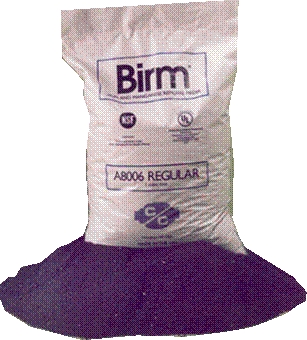

Remove Iron in Water with Chlorine
Chlorine dioxide can be used effectively for oxidation of iron from the moderately soluble ferrous state to ferric ion, resulting in the formation of ferric hydroxide, which forms a heavy gelatinous brown flocculation, which can be removed by sedimentation followed by filtration.
Here too optimum pH condition are always higher than 7 and preferably 8 or 9 and must be determined by laboratory procedures. The rapidly with which chlorine dioxide reacts in the oxidation of iron is not as significant as in the case of manganese. Chlorine is the chemical of choice ( except for chlorine dioxide ) in this case, unless the water being treated has a high ammonia content or other nitrogenous compounds that would seriously interfere with the formation of free available chlorine. This would be an economic consideration unless there were side reactions causing taste and dour problems treatable only by chlorine dioxide.
The oxidation of iron by chlorine dioxide is as follows:
ClO2 + FeO + NaOH + H2O ——> Fe (OH)3 + NaClO2
Here 1.2 parts of ClO2 are required to remove 1.0 part iron as Fe, and 1.2 parts ClO2 are equivalent to 2.02 parts 80 percent NaClO2 from which the ClO2 is generated plus a like amount of chlorine. So 2.02 part of sodium chloride are required to oxidize 1.0 part of iron.
Also Birm media using for Iron and manganese remover in water treatment multimedia filters. Birm media acts as the catalyst reduction of dissolved ferric iron and manganese compounds from raw water supplies and also used in either gravity fed filtration system or pressurized water treatment systems.
for more information click here
2 Responses to “Remove Iron in Water with Chlorine”
Leave a Reply








 LIKE TO GET UPDATES
LIKE TO GET UPDATES  TO GET EXPERT GUIDE
TO GET EXPERT GUIDE
Hello there, You have done an incredible job. I’ll definitely digg it and personally suggest to my friends. I’m confident they’ll be benefited from this web site.
want to know more on iron removal in water